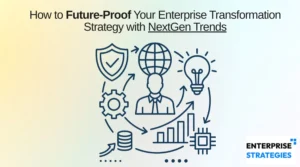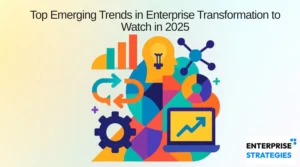In today’s fast-evolving business landscape, organizations, especially mid-sized ones, need agile, intelligent, and data-driven Human Capital Management (HCM) systems. However, not all HCM platforms are built the same. Most legacy systems rely on relational databases (SQL-based), which can struggle with the complexity of modern workforce management. In contrast, HCM platforms built on graph databases offer a more flexible, scalable, and insightful approach to managing human capital.
For CEOs, CFOs, and CHROs making strategic decisions, understanding the difference between graph-based and relational-based HCM platforms can be the key to unlocking better workforce management, talent mobility, and organizational intelligence.
Graph Database vs. Relational Database: What’s the Difference?
At its core, a relational database (RDBMS) stores employee data in tables with rows and columns – not unlike what you may be used to seeing in Microsoft Excel. It requires complex JOIN operations to connect employees to teams, projects, skills, and career paths. As a result, queries in RDBMS can become slow and inefficient when dealing with large-scale, complex, workforce relationships.
A graph database (e.g., Neo4j, ArangoDB, TigerGraph), on the other hand, stores data as nodes and relationships. This structure mirrors real-world workforce connections, allowing businesses to quickly analyze relationships, skills, collaboration patterns, and career trajectories in real time.
Why a Graph Database-Based HCM is the Future of Workforce Intelligence
1. Advanced Organizational & Workforce Insights
⏩ Use Case: Identifying Influential Employees & Succession Planning
Graph-based HCM platforms can instantly identify hidden influencers within the company. Instead of relying only on job titles and reporting hierarchies, they analyze collaboration networks to uncover informal leaders who drive productivity and innovation.
🔹 Example: Darwinbox, an emerging HCM leader, leverages graph technology to map employee influence and identify potential leaders based on their contributions and cross-team collaboration.
✅ Why It Matters: CEOs and CHROs gain deeper insights into workforce dynamics, helping with succession planning and leadership development.
2. Talent Mobility & Internal Career Pathing
⏩ Use Case: Smart Career Progression Recommendations
In a relational database, career progression is often static, limited to predefined paths set by HR teams. A graph-based HCM, however, can dynamically analyze employee skills, past projects, and learning history to recommend the best career moves in real-time.
🔹 Example: Workday (primarily an RDBMS-based HCM) struggles with dynamic career pathing without extensive custom queries. In contrast, graph-powered HCMs like Gloat analyze millions of workforce connections to suggest AI-driven career growth opportunities.
✅ Why It Matters: Employees see more personalized career paths, leading to higher engagement and retention.
3. Faster & More Efficient Organizational Restructuring
⏩ Use Case: Mergers, Acquisitions, & Workforce Planning
When companies undergo M&A or large-scale reorganizations, HR teams often spend months mapping who does what, who works with whom, and where talent gaps exist. Relational databases require manual data extraction and complicated queries to generate these insights, slowing down decision-making.
🔹 Example: SAP SuccessFactors (RDBMS-based) requires custom workflows and external analytics tools for organizational restructuring. A graph-based system, however, provides real-time visualization of workforce structures, automating reorganization planning.
✅ Why It Matters: CFOs and CHROs gain an instant, real-time view of how to optimize workforce structures, reducing costs and improving efficiency.
4. Employee Collaboration & Workforce Connectivity
⏩ Use Case: Understanding Cross-Functional Team Interactions
Traditional HCM systems store employees by department, title, or job code, but they fail to capture real-world collaboration patterns. A graph-based HCM visualizes relationships across teams, projects, and geographies.
🔹 Example: LinkedIn (graph database) uses workforce connections to recommend professional networks. In the same way, graph-based HCMs can track employee interactions, helping CHROs optimize team structures and collaboration.
✅ Why It Matters: CEOs and CHROs can enhance team productivity by identifying highly effective cross-functional groups and breaking down silos.
5. AI-Driven Skills Mapping & Workforce Planning
⏩ Use Case: Matching Employees with the Right Training & Opportunities
Graph databases excel at mapping complex skill relationships and connecting employees to the right learning programs.
🔹 Example: Cornerstone OnDemand (partially graph-powered) uses AI-driven insights to recommend personalized learning and career growth opportunities.
✅ Why It Matters: Employees receive tailored training recommendations, ensuring they develop skills that align with both business goals and personal career aspirations.
Which HCM Platforms Use Graph Databases?
📌 Graph-Based HCMs:
📌 Relational-Based HCMs:
Why CEOs, CFOs, and CHROs Should Care
🔹 For CEOs: Enables real-time workforce intelligence to make faster strategic decisions.🔹 For CFOs: Provides cost-efficient workforce planning by optimizing team structures.🔹 For CHROs: Enhances talent retention, mobility, and workforce engagement through better insights.
🚀 Bottom Line: If your company relies on hierarchical org charts and rigid processes, you’re already falling behind. A graph-based HCM platform is future-ready, built for agility, and designed to uncover hidden workforce intelligence that relational databases can’t handle.
Interested in transforming your workforce strategy? Contact Enterprise Strategies to explore how a graph-based HCM solution can help your organization grow smarter, faster, and more efficiently.




